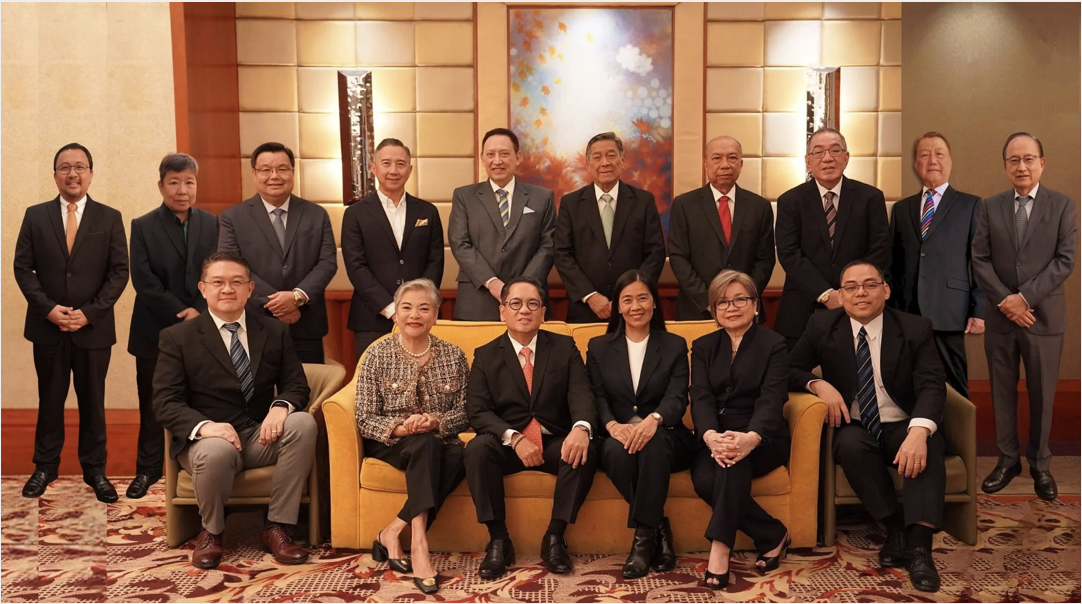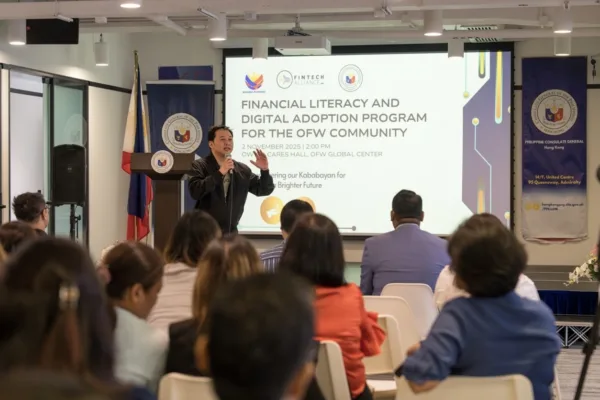The Philippine thrift banking sector is emerging as a powerful engine for economic development, reporting impressive growth in 2024.
New data released by the Chamber of Thrift Banks (CTB) in July 2025 reveals a vibrant landscape, with total assets soaring by 6% to reach a remarkable $19.5 billion (PHP1.1 trillion). This robust performance signals the sector’s increasing influence and vital role in the nation’s financial ecosystem.

Members and officers of the Chamber of Thrift Banks (CTB)
At the heart of this expansion lies a significant surge in lending activities. Thrift banks saw their core loan portfolios expand by a substantial 14.7%, reaching $13.8 billion (PHP777.28 billion).
This impressive growth in lending underscores the sector’s commitment to providing crucial financial access to individuals and businesses across the country, particularly micro, small, and medium enterprises (MSMEs) and local communities. By extending credit, thrift banks are directly contributing to job creation, business expansion, and overall economic dynamism.
“We are pleased to report that the Chamber of Thrift Banks has continued to demonstrate remarkable growth and adaptability through the years,” stated CTB President Mary Jane Perreras. Her sentiments highlight the sector’s resilience and its ability to navigate a dynamic economic environment while consistently delivering positive results.
Strong deposits, digital innovation bolstering thrift bank stability and service

The sector’s strength isn’t just in its lending prowess. Thrift banks have also seen their deposit liabilities climb by 4.7% to $14.67 billion (PHP826 billion), indicating growing public trust and confidence in their services. Furthermore, the CTB emphasized the sector’s unwavering financial stability, maintaining a strong capital base of $3.08 billion (PHP174 billion).
This solid foundation is further reinforced by a capital adequacy ratio of 17.88%, significantly exceeding regulatory requirements, providing a substantial buffer against potential economic fluctuations.
Beyond the impressive financial figures, thrift banks are also embracing innovation to better serve their clientele. Perreras noted that many CTB member banks have successfully upgraded their digital infrastructure and adopted stringent cybersecurity protocols.
This proactive approach ensures the safety and integrity of financial transactions in an increasingly interconnected world. Recognizing the importance of digital literacy, these banks are also offering programs to educate consumers, empowering them to navigate the digital financial landscape securely.
Strategic partnerships paving the way for enhanced financial inclusion

In a move that further streamlines their operations and enhances customer experience, thrift banks have forged collaborative efforts with fintech firms and low-code platform providers. This strategic embrace of technology has enabled them to roll out customized digital services with greater efficiency, making banking more accessible and convenient for a wider segment of the population.
The CTB is not resting on its laurels. Perreras affirmed the sector’s commitment to continuous improvement, stating, “Our goal is to strengthen the thrift banking sector’s contribution to inclusive economic development, ensuring our members remain key providers of financial access in communities across the country.” Looking ahead, the CTB will continue to champion sound risk management, operational excellence, and sustainable growth for its members.
Through ongoing “quarterly engagements with the BSP’s Bank Supervision Policy Committee,” the CTB actively advocates for regulatory adjustments that are more attuned to the specific realities and operational nuances of thrift banks. A key proposal currently on the table is the lowering of the Minimum Liquidity Ratio from 20% to 16%, a move that could free up more capital for lending while maintaining financial prudence.
The remarkable performance of Philippine thrift banks in 2024 is a clear indicator of their growing significance. By consistently expanding their reach, embracing technological advancements, and advocating for supportive regulatory frameworks, these institutions are not just growing their assets; they are actively building a more inclusive and robust financial future for the Philippines.








